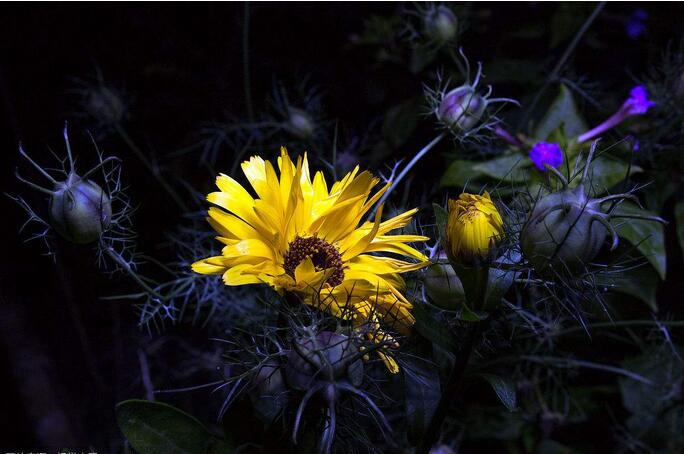(单词翻译:单击)
Most plants grow buds, flower, or lie dormant at specific times of year.
大多数植物都在每年特定时间里发芽,开花,或者冬眠。
What triggers these seasonal changes?
什么原因导致植物的季节性变化?
Temperature and rainfall often play a role, but the most important factor to many plants is the length of the day.
通常,影响因素包括温度和降雨,但是对许多植物来说,最重要的因素是昼长。

At least, that’s what biologists thought until the 1940s, when the whole concept of day length sensitivity in plants was turned upside down.
至少在20世纪40年代之前,生物学家们是这么认为的,直到植物对昼长敏感的理论彻底被推翻。
Experiments showed that plants that seem to flower in response to day length actually respond to night length.
实验显示,那些看起来受昼长影响而开花的植物其实是受夜长影响。
In other words, what prompts irises to bloom in summer in North America isn’t longer sunny days, but shorter nights.
换句话说,促使北美地区的鸢尾花在夏季盛开的不是更长的白昼而是短暂的夜间。
Here’s how biologists figured out how important nightlife can be to plants.
我们来看看生物学家是如何确定夜晚对植物的重要性吧。
They started with the cockle burr plant, which flowers when days are short.
他们先以苍耳为例,这种植物会在昼长较短时开花。
译文为可可英语翻译,未经授权请勿转载!


